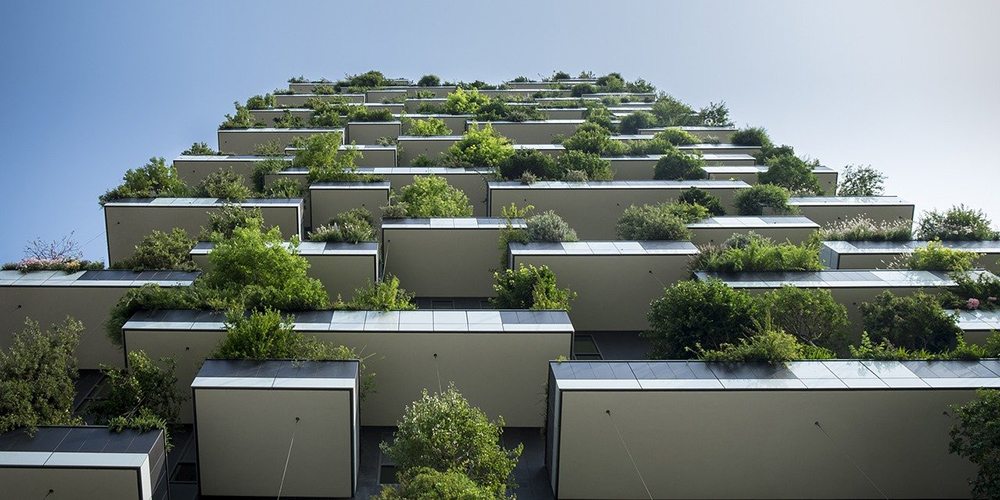How Does Architecture Integrate Principles Of Regenerative Design?

Urban planning has become an essential part of our lives, as cities continue to expand worldwide. However, conventional urban planning concepts have resulted in a host of environmental and social problems. Regenerative urban planning is necessary given the alarming situation today. Our cities are at the forefront of the climate crisis, and they need to be re-oriented, re-thought, and redesigned to be more sustainable and resilient. Let's explore some reasons why regenerative urban planning is badly needed.
Reasons for Regenerative Urban Planning
Cities are the Frontline of the Climate Change Challenge
As the world is facing unprecedented environmental degradation, cities are emerging as the front lines of mitigating the climate crisis. Recent studies reveal that cities generate more than 70 percent of global greenhouse gas emissions and consume more than two-thirds of global energy consumption. The extraction of resources to provide for urban infrastructure and living relies on capitalist industries that contribute to pollution and greenhouse gas emissions. Therefore, regenerative urban planning is urgently required to mitigate the overall greenhouse gas emissions and environmental degradation that result from urban development.
Urbanization is the New Normal
The trend of urbanization is on the rise, mainly due to the availability of job opportunities, educational facilities, and other public amenities offered by cities. It is expected that by 2050, around 68 percent of the world's population will live in urban areas. Unfortunately, rapid urbanization has led to unsustainable urban planning practices, including the fragmentation of rural areas, the consumption of green spaces, and poorly designed transport systems that contribute to traffic congestion.
Urban Planning Affects Community Health
The conventional urban planning model has adverse effects on community health. Urban sprawl and poorly planned neighborhoods discourage walking and cycling, leading to sedentary lifestyles, which are associated with obesity and chronic diseases. Regenerative urban planning seeks to redress these challenges by creating pedestrian-friendly environments, promoting healthy lifestyles, and improving social relationships.
Regenerative Urban Planning Promotes Biodiversity
Biodiversity is the variety of life forms that exist in a given ecosystem. Urban development and human activities have significantly contributed to the disappearance of plants, animals, and insects, leading to a loss of biodiversity. Regenerative urban planning looks to restore and enhance biodiversity through tree planting, the creation of wildlife habitats, and the use of rain gardens, among other methods.
Regenerative Urban Planning can Enhance Resilience to Environmental Shocks
Cities are prone to various types of environmental shocks, such as floods, droughts, and heatwaves. The frequency and severity of these events are expected to increase due to climate change. Regenerative urban planning can promote resilience by integrating green infrastructure, creating sustainable transport systems, and using natural systems such as wetlands to mitigate flooding events.
Regenerative Urban Planning Supports Sustainable Economic Development
Regenerative urban planning can support sustainable economic development by creating jobs, promoting innovation, and supporting clean energy systems. Mixed-use developments can revitalize under-utilized city assets, generate tax revenue for municipalities, and create economic opportunities for businesses and individuals.
Regenerative Urban Planning Supports Inclusive Planning
Regenerative urban planning seeks to involve various stakeholders in the planning process, such as local communities, civil society organizations, and marginalized groups. Inclusion and participation are key factors in creating sustainable and resilient urban environments that promote social inclusion and reduce inequality. It also ensures that the diverse needs and perspectives of all citizens are represented, which helps to build a stronger community.
Regenerative Urban Planning Promotes Resource Efficiency
Urban development uses a vast range of resources, including water, energy, and raw materials. Regenerative urban planning seeks to minimize resource use while maintaining or improving the quality of life. This can be achieved through the integration of sustainable building designs such as green roofs and walls, energy-efficient lighting systems, and the use of renewable energy technologies.
FAQs about Regenerative Urban Planning
What is Regenerative Urban Planning?
Regenerative urban planning is an approach to urban development that seeks to create sustainable and resilient cities that enable communities to thrive, while safeguarding natural ecosystems for future generations. It involves the use of innovative solutions and strategies that promote social, economic, and environmental sustainability by utilizing natural systems, biodiversity, and ecosystem services.
What are the Main Principles of Regenerative Urban Planning?
Regenerative urban planning is based on three broad principles.
- Promotion of ecological and social resilience
- Circularity and resource efficiency
- Social and community equity and inclusion
These principles incorporate various concepts such as green infrastructure, urban agriculture, renewable energy technologies, and transportation systems that work in harmony with natural systems, biodiversity, and ecosystem services.
What are the benefits of Regenerative Urban Planning?
Regenerative urban planning has several benefits, such as:
- Promotes sustainability and resilience
- Reduces greenhouse gas emissions and environmental degradation
- Promotes health and well-being
- Enhances biodiversity and wildlife habitats
- Promotes resource efficiency and circularity
- Supports sustainable economic development
- Fosters inclusion and community equity
What are the Challenges of Regenerative Urban Planning?
There are several challenges in implementing regenerative urban planning in cities, including:
- Lack of political will and financial resources
- Limited stakeholder participation and engagement
- Resistance to change from the status quo
- The complexity of urban systems and interactions
Conclusion
Regenerative urban planning is an essential approach to urban development that prioritizes sustainability, resilience, and community equity. It seeks to create a future of sustainable and resilient cities that enable people to thrive while preserving natural environments for future generations. However, its implementation requires concerted efforts from all stakeholders, including local governments, civil society organizations, the business community, and citizens. Thus, we need to embrace regenerative urban planning to build the cities of the future we want.




Post a Comment for "How Does Architecture Integrate Principles Of Regenerative Design?"